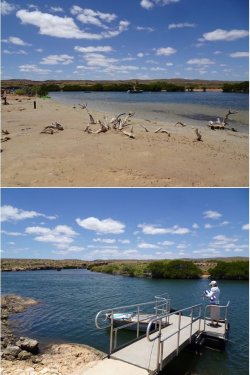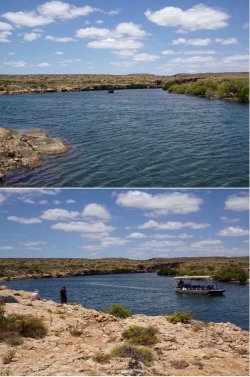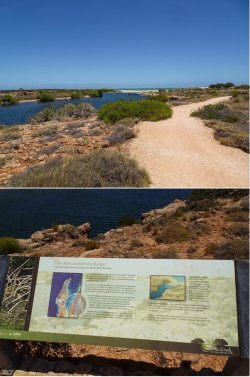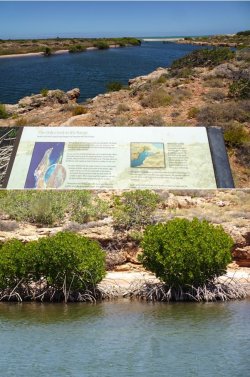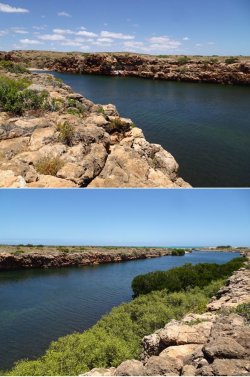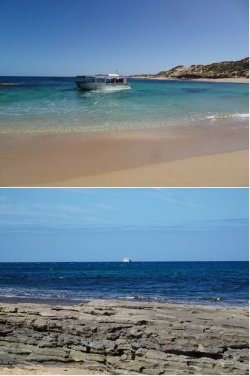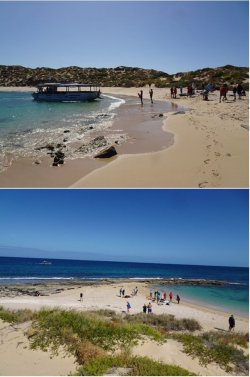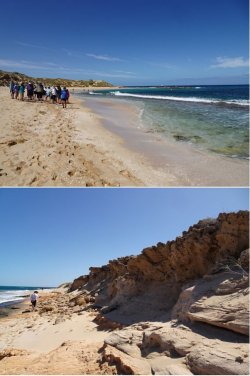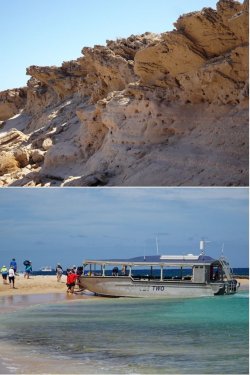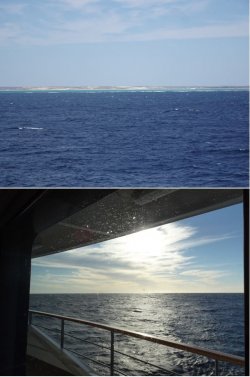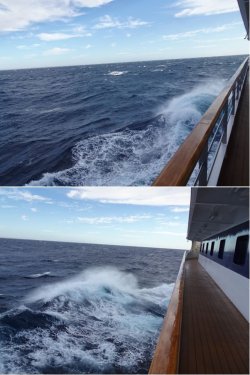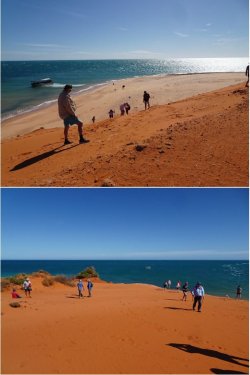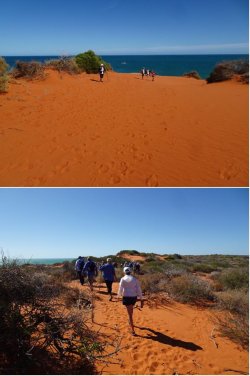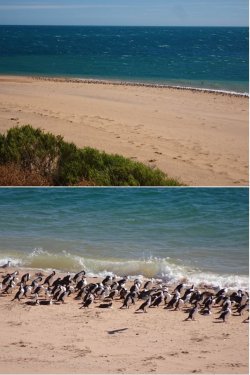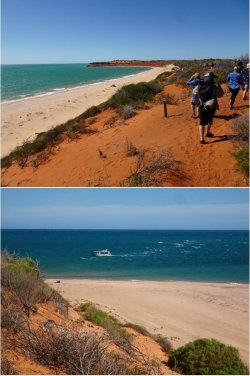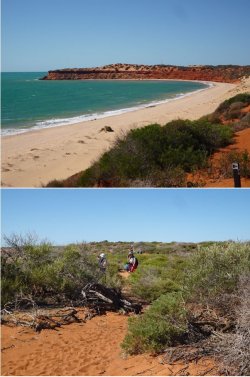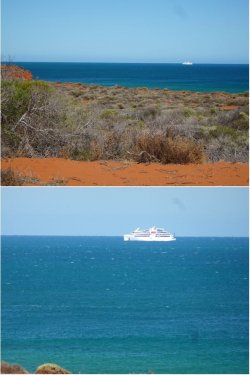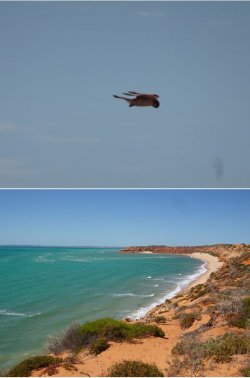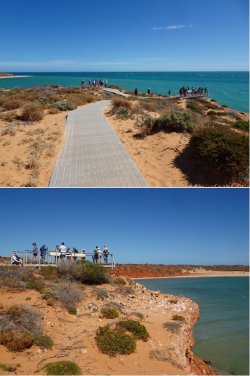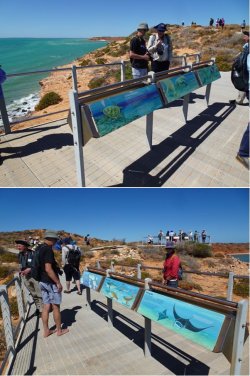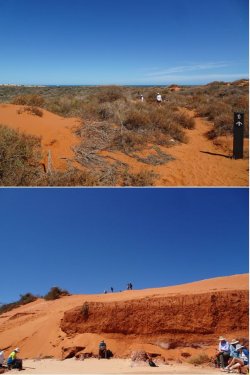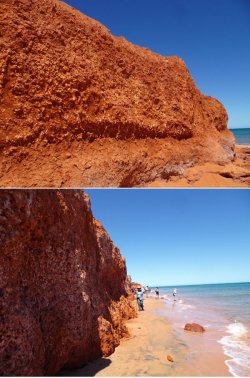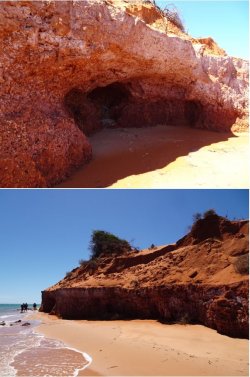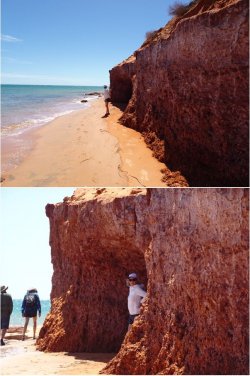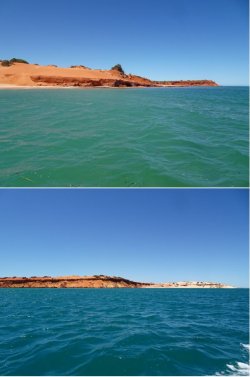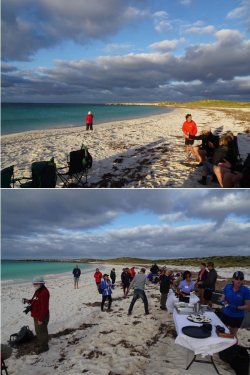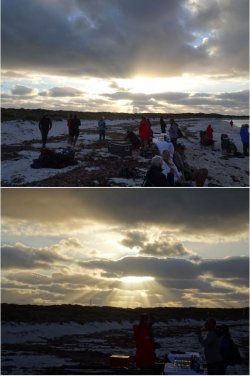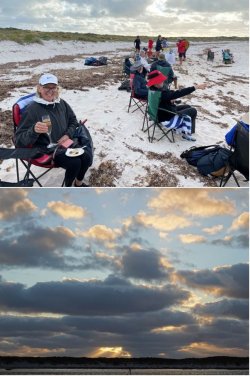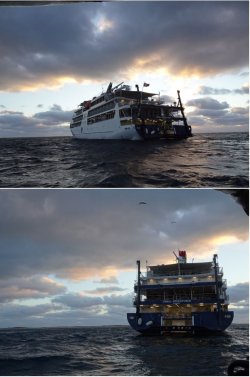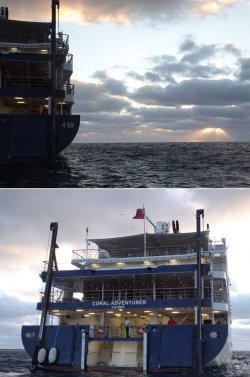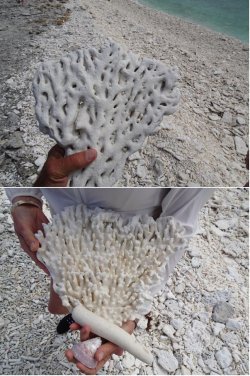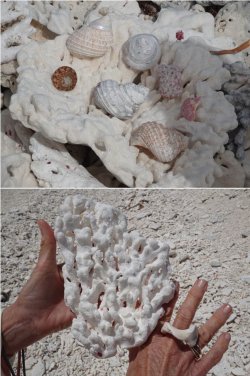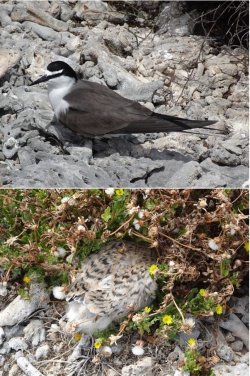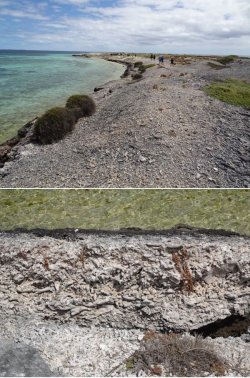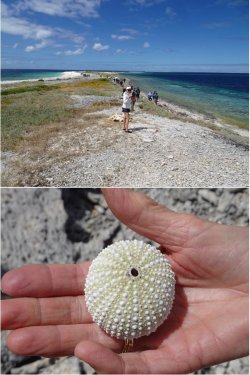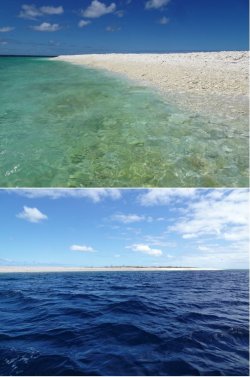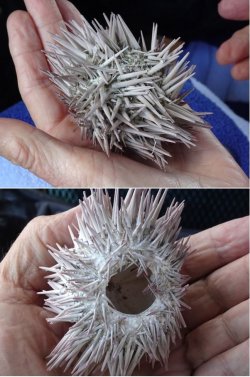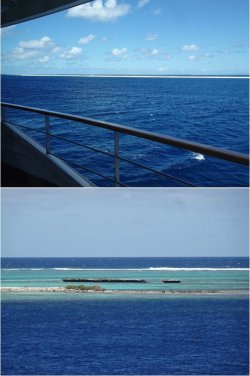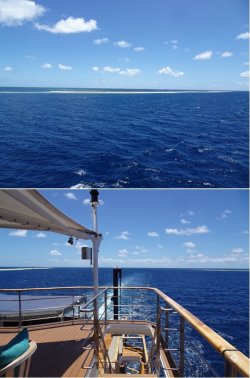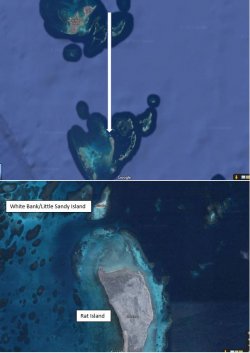You are using an out of date browser. It may not display this or other websites correctly.
You should upgrade or use an alternative browser.
You should upgrade or use an alternative browser.
WAving - from a west coast voyage
- Thread starter JohnM
- Start date
- Status
- Not open for further replies.
JohnM
Enthusiast
- Joined
- Jun 7, 2006
- Posts
- 11,804
- Qantas
- LT Gold
The Ningaloo Discovery Centre is excellent.
The historical section covers WW2 activities, the initially US-run Naval Communication Station (Naval Communication Station Harold E. Holt - Wikipedia) and Cyclone Vance (Cyclone Vance - Wikipedia).
The other part is the aquarium and wildlife displays.
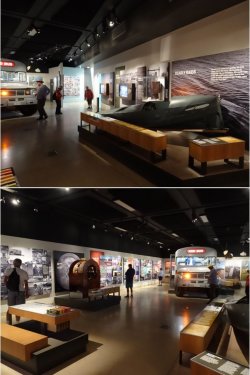
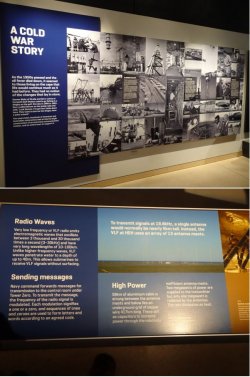
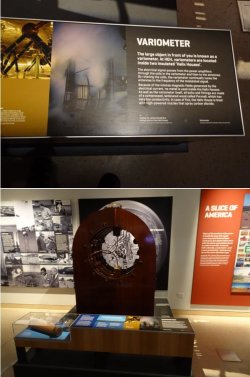
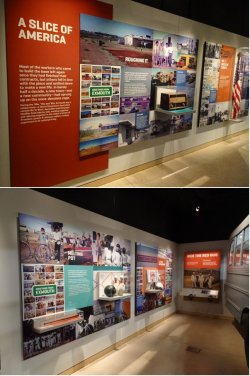
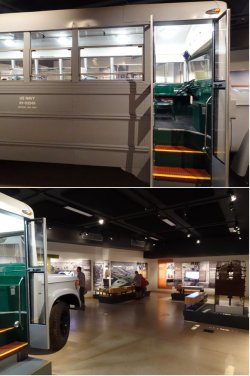
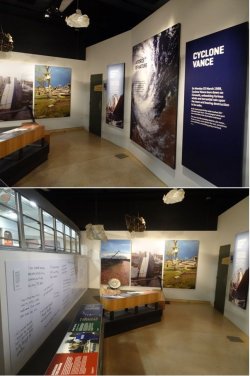
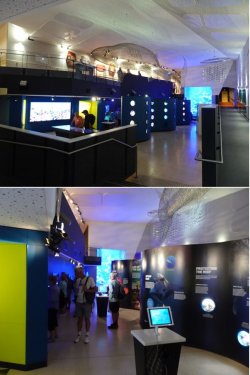
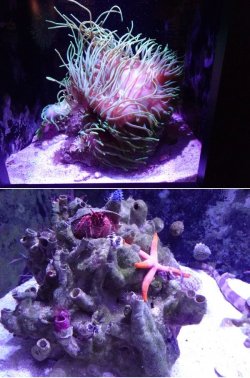
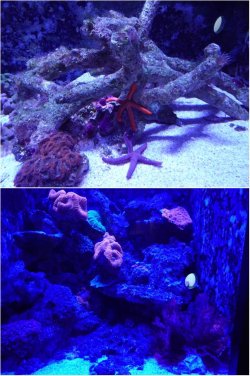
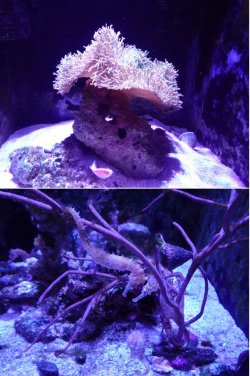
The historical section covers WW2 activities, the initially US-run Naval Communication Station (Naval Communication Station Harold E. Holt - Wikipedia) and Cyclone Vance (Cyclone Vance - Wikipedia).
The other part is the aquarium and wildlife displays.










JohnM
Enthusiast
- Joined
- Jun 7, 2006
- Posts
- 11,804
- Qantas
- LT Gold
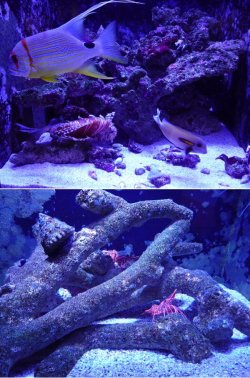
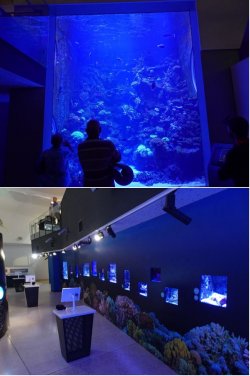
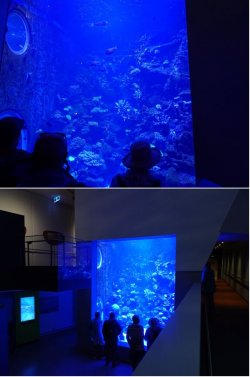
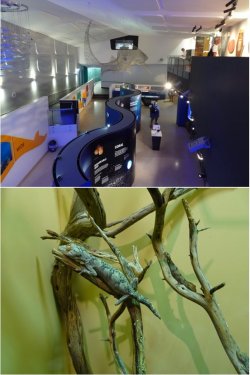
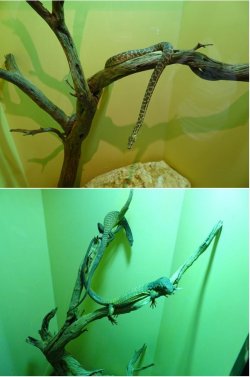
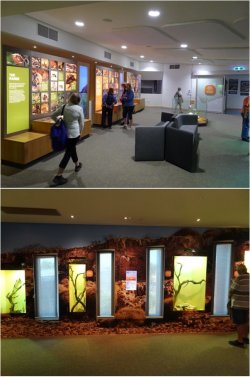
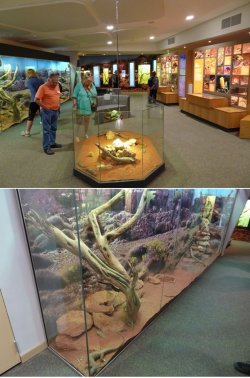
Back on board for the sundowner as we headed N out of Exmouth Gulf to swing W and then S around NW Cape. By morning we were anchored a little NW of Coral Bay and preparing for an excursion to the beach and the lagoon in the Bateman Bay sanctuary zone. It’s a major manta ray habitat, as the gap in Ningaloo Reef allows water circulation and rich feeding.
By now, as we got further S and southern Australia was still in the grip of winter-pattern weather, the S wind was strengthening, becoming persistent and the days were becoming cool. Few, if any, people opted to go in the water, so we just beachcombed.
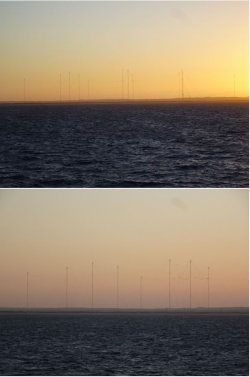
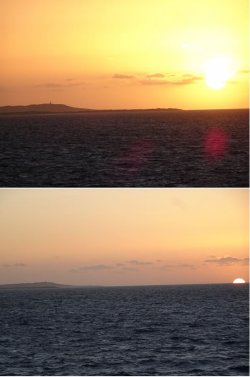
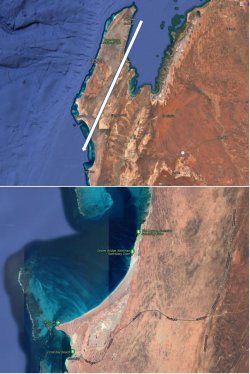
JohnM
Enthusiast
- Joined
- Jun 7, 2006
- Posts
- 11,804
- Qantas
- LT Gold
Next morning, we were anchored in Shark Bay between Dirk Hartog Island and the Peron Peninsula. A shore excursion to Cape Peron in the Francois Peron National Park that occupies the cape north of the Denham-Monkey Mia road was on for the morning.
It’s also a good 4WD outing on very sandy tracks, which I’ve previously done. Air-down tyres is mandatory and there is a convenient air-station at the park entry just north of Denham. It’s a good full day outing from Denham, and some camping is permitted within the park.
Coming in from the ocean was a good addition to the overall experience.
It was still windy, with a splashy ride in the tender. The notable landscape feature of the peninsula are the red cliffs and dunes. There was a large cormorant colony at the cape, with a slog up the steep cliff through the soft sand to get to the top.
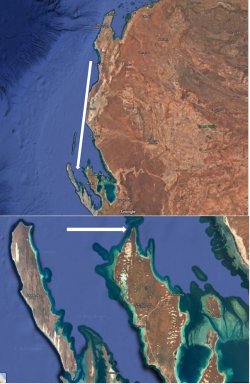
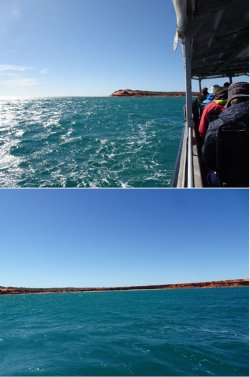
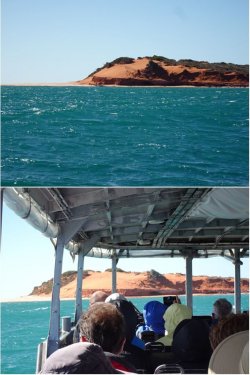
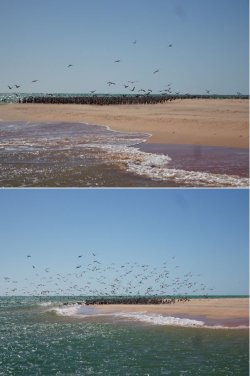
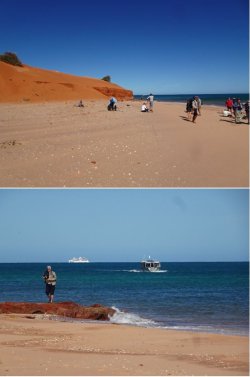
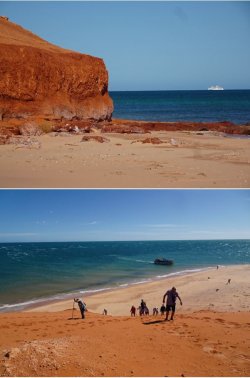
Phew! Looking – and WAving…
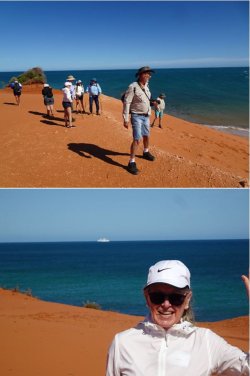
It’s also a good 4WD outing on very sandy tracks, which I’ve previously done. Air-down tyres is mandatory and there is a convenient air-station at the park entry just north of Denham. It’s a good full day outing from Denham, and some camping is permitted within the park.
Coming in from the ocean was a good addition to the overall experience.
It was still windy, with a splashy ride in the tender. The notable landscape feature of the peninsula are the red cliffs and dunes. There was a large cormorant colony at the cape, with a slog up the steep cliff through the soft sand to get to the top.






Phew! Looking – and WAving…

JohnM
Enthusiast
- Joined
- Jun 7, 2006
- Posts
- 11,804
- Qantas
- LT Gold
Back to the ship for lunch, weighing anchor and sailing past Point Inscription on the N end of Dirk Hartog Island. This location and the Dutch sailor Dirk Hartog are significant in WA history, with Hartog being the first recorded European to land on the W coast of Australia, in 1616.
He left a significant record of his landing in the form of an inscribed pewter plate at Cape Inscription. It is now in the Rijksmuseum in Amsterdam.
(Dirk Hartog Island - Wikipedia, Dirk Hartog - Wikipedia).
Dirk Hartog Island can be visited (Dirk Hartog Island | Dirk Hartog Island - Western Australia). I have yet to get there, but I have gazed across the channel from where the barge leaves, near Steep Point. Again, a sandy 4WD track out there with mandatory air-down for tyres and an air-station at the entry.
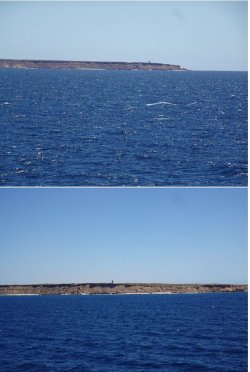
The small object behind and between the lighthouse and the shed is the Cape Inscription Dirk Hartog memorial.
When the Coral Expeditions west coast voyage was first mooted, I think the intention, or hope, was to land on Dirk Hartog Island. I was certainly hopeful of that, particularly to see the Hartog site, but it seems that it is not feasible or practical.
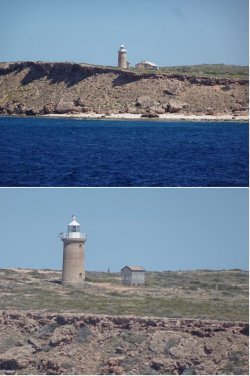
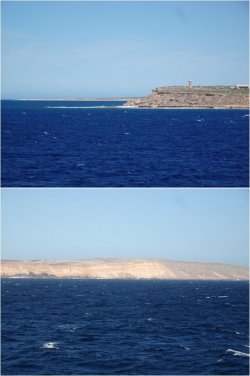
He left a significant record of his landing in the form of an inscribed pewter plate at Cape Inscription. It is now in the Rijksmuseum in Amsterdam.
(Dirk Hartog Island - Wikipedia, Dirk Hartog - Wikipedia).
Dirk Hartog Island can be visited (Dirk Hartog Island | Dirk Hartog Island - Western Australia). I have yet to get there, but I have gazed across the channel from where the barge leaves, near Steep Point. Again, a sandy 4WD track out there with mandatory air-down for tyres and an air-station at the entry.

The small object behind and between the lighthouse and the shed is the Cape Inscription Dirk Hartog memorial.
When the Coral Expeditions west coast voyage was first mooted, I think the intention, or hope, was to land on Dirk Hartog Island. I was certainly hopeful of that, particularly to see the Hartog site, but it seems that it is not feasible or practical.


Elevate your business spending to first-class rewards! Sign up today with code AFF10 and process over $10,000 in business expenses within your first 30 days to unlock 10,000 Bonus PayRewards Points.
Join 30,000+ savvy business owners who:
✅ Pay suppliers who don’t accept Amex
✅ Max out credit card rewards—even on government payments
✅ Earn & transfer PayRewards Points to 10+ airline & hotel partners
Start earning today!
- Pay suppliers who don’t take Amex
- Max out credit card rewards—even on government payments
- Earn & Transfer PayRewards Points to 8+ top airline & hotel partners
Join 30,000+ savvy business owners who:
✅ Pay suppliers who don’t accept Amex
✅ Max out credit card rewards—even on government payments
✅ Earn & transfer PayRewards Points to 10+ airline & hotel partners
Start earning today!
- Pay suppliers who don’t take Amex
- Max out credit card rewards—even on government payments
- Earn & Transfer PayRewards Points to 8+ top airline & hotel partners
AFF Supporters can remove this and all advertisements
JohnM
Enthusiast
- Joined
- Jun 7, 2006
- Posts
- 11,804
- Qantas
- LT Gold
I admire PJM, there’s no way I could pack a white jacket for a trip Up North
Fortunately, the red sand is nothing like the red dust of the Pilbara & Kimberley for getting into and staining everything.
JohnM
Enthusiast
- Joined
- Jun 7, 2006
- Posts
- 11,804
- Qantas
- LT Gold
Aboard the ship for the next 24h as we headed for two days at our final exploratory destination of the voyage: the Houtman Abrolhos (Houtman Abrolhos - Wikipedia).
The ‘Abrolhos’ as we commonly know it in WA, is a fascinating mix of geography, nature, crayfishing industry and dark history. We were fortunate to have Howard Gray, a Geraldton-based historian who has written extensively on all aspects of the Abrolhos (Guest Lecturer - Howard Gray | Onboard Coral Expeditions, https://www.westralianbooks.com.au/s/shop) on board as one of the guest lecturers. A terrific guy and very informative.
He also does guest lecturing on the Eco Abrolhos, the smaller Geraldton-based vessel that I and some other AFFErs have been on, or are planning to (Not shipwrecked or mutinying, waving - from the Abrolhos Islands).
As it turned out, our first stop at the Abrolhos was in Turtle Bay on the N side of East Wallabi Island and our (further inshore) neighbour was the Eco. Nice memories!
The grey skies, cool temperature and fresh S wind was to stay with us until the end of the voyage 4 days hence. It put a bit of a dampener on the Turtle Bay beach sundowner and the desirability of going snorkelling or scuba diving. C’est la vie.
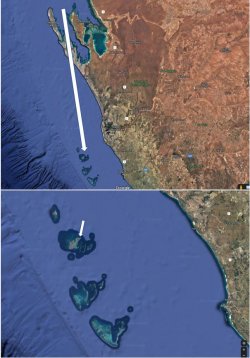
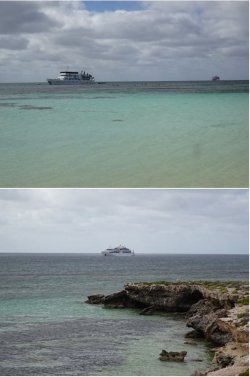
An afternoon nature walk on East Wallabi Island.
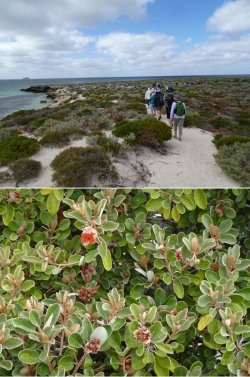
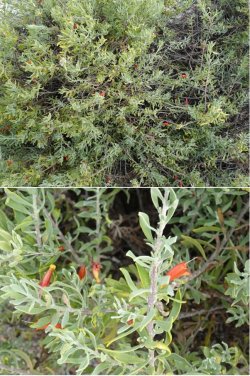
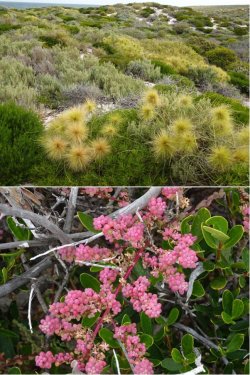
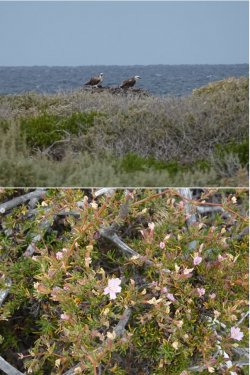
The ‘Abrolhos’ as we commonly know it in WA, is a fascinating mix of geography, nature, crayfishing industry and dark history. We were fortunate to have Howard Gray, a Geraldton-based historian who has written extensively on all aspects of the Abrolhos (Guest Lecturer - Howard Gray | Onboard Coral Expeditions, https://www.westralianbooks.com.au/s/shop) on board as one of the guest lecturers. A terrific guy and very informative.
He also does guest lecturing on the Eco Abrolhos, the smaller Geraldton-based vessel that I and some other AFFErs have been on, or are planning to (Not shipwrecked or mutinying, waving - from the Abrolhos Islands).
As it turned out, our first stop at the Abrolhos was in Turtle Bay on the N side of East Wallabi Island and our (further inshore) neighbour was the Eco. Nice memories!
The grey skies, cool temperature and fresh S wind was to stay with us until the end of the voyage 4 days hence. It put a bit of a dampener on the Turtle Bay beach sundowner and the desirability of going snorkelling or scuba diving. C’est la vie.


An afternoon nature walk on East Wallabi Island.




- Joined
- Jan 9, 2016
- Posts
- 2,230
- Qantas
- Platinum
That’s why sensible people stayed aboard for complimentary coughtails (and the good wines) and the delicious canapés. Delicious, and relaxing out of the wind. (Along with Glenn the bar manager, who new the better place to be!)
Last edited:
JohnM
Enthusiast
- Joined
- Jun 7, 2006
- Posts
- 11,804
- Qantas
- LT Gold
We remained at anchor off East Wallabi (aka Abrolhos) Island overnight. Next morning was an excursion to near Beacon Island – also known as ‘Batavia’s Graveyard’ and ‘The Island of Angry Ghosts’ after the title of diver/journalist Hugh Edwards’ 1966 book of that name (Islands of Angry Ghosts - Wikipedia).
It is on the fringing reef of Beacon Island that the Batavia became wrecked, opening a gory yet fascinating episode in WA history.
The WA Shipwrecks Maritime Museums in Fremantle (WA Shipwrecks Museum | Western Australian Museum) and Geraldton (Museum of Geraldton | Western Australian Museum) are both excellent and are largely centred around the Batavia (Batavia (1628 ship) - Wikipedia) story.
Traitor’s Island, where most of the survivors first huddled, is no more than a coral shingle cay – and tiny at that.
The original intention was to land on Beacon Island but the construction of a pier made it difficult. We ventured out towards the wreck site in the channel between Beacon and Traiitor’s Islands to the E and Long Island to the W. We lingered there while Howard Gray gave a very comprehensive description of the events. In many ways, I thought it was better than landing on the island, which I had done on my previous trip (post #38: Not shipwrecked or mutinying, waving - from the Abrolhos Islands).
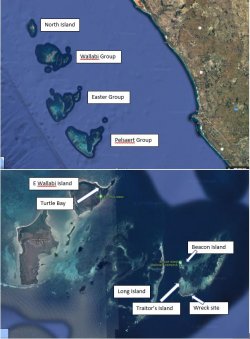
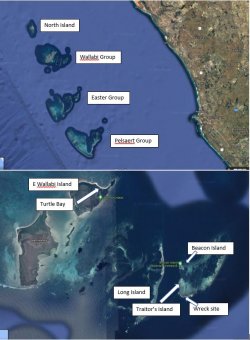
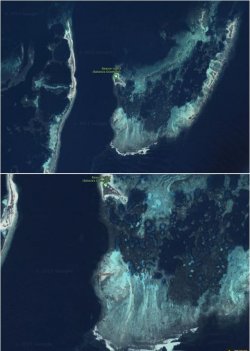
The reef. Cloudy day doesn’t help sharpness. Howard Gray speaking, with Beacon Island behind.
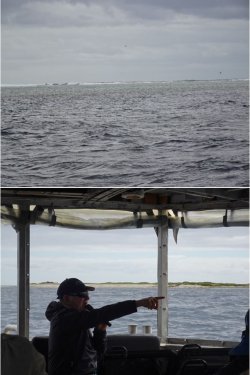
Traitor’s Island.
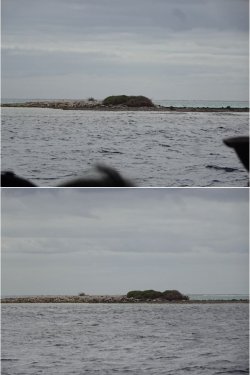
Beacon Island and Batavia Memorial. Then in the background as we go over to land on very coral shingly Long Island.
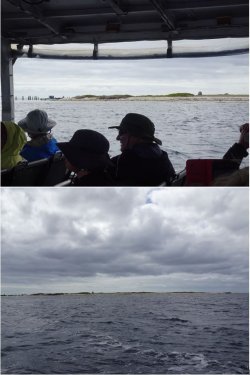
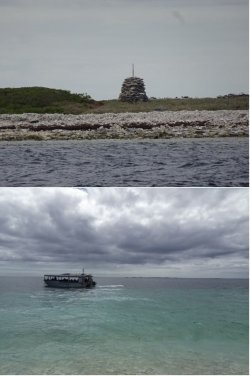
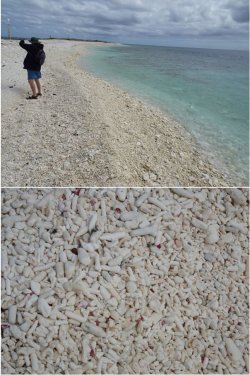
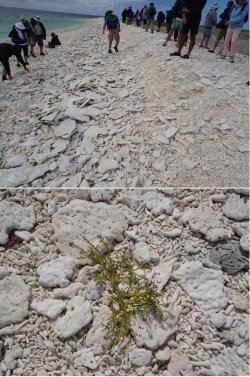
Possibly a shelter from the incident.
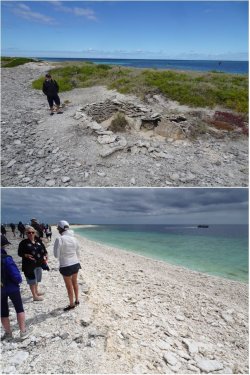
It is on the fringing reef of Beacon Island that the Batavia became wrecked, opening a gory yet fascinating episode in WA history.
The WA Shipwrecks Maritime Museums in Fremantle (WA Shipwrecks Museum | Western Australian Museum) and Geraldton (Museum of Geraldton | Western Australian Museum) are both excellent and are largely centred around the Batavia (Batavia (1628 ship) - Wikipedia) story.
Traitor’s Island, where most of the survivors first huddled, is no more than a coral shingle cay – and tiny at that.
The original intention was to land on Beacon Island but the construction of a pier made it difficult. We ventured out towards the wreck site in the channel between Beacon and Traiitor’s Islands to the E and Long Island to the W. We lingered there while Howard Gray gave a very comprehensive description of the events. In many ways, I thought it was better than landing on the island, which I had done on my previous trip (post #38: Not shipwrecked or mutinying, waving - from the Abrolhos Islands).



The reef. Cloudy day doesn’t help sharpness. Howard Gray speaking, with Beacon Island behind.

Traitor’s Island.

Beacon Island and Batavia Memorial. Then in the background as we go over to land on very coral shingly Long Island.




Possibly a shelter from the incident.

JohnM
Enthusiast
- Joined
- Jun 7, 2006
- Posts
- 11,804
- Qantas
- LT Gold
JohnM
Enthusiast
- Joined
- Jun 7, 2006
- Posts
- 11,804
- Qantas
- LT Gold
An afternoon landing on Little Sandy Island for exploring (almost within a few body lengths) or snorkelling/diving. It was windy and cold, so only a few went in the water. I had been thinking of doing another scuba dive but bailed on that idea just because it didn’t feel summery enough. Maybe a pity as those who did said it was spectacular; however, the current was very strong.
Little Sandy Island with Rat Island, and its many crayfishing facilities, in the background. Little Sandy Island featured for a sundowner on my previous trip (posts #35 & 36: Not shipwrecked or mutinying, waving - from the Abrolhos Islands).
Plant a coconut palm tree and you have the set for many a Gary Larson cartoon…
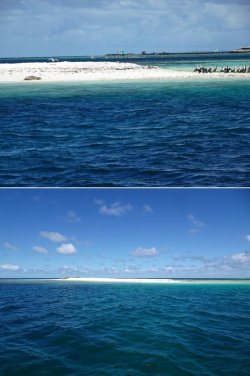
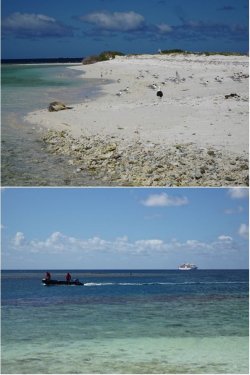
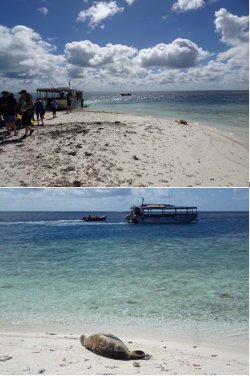
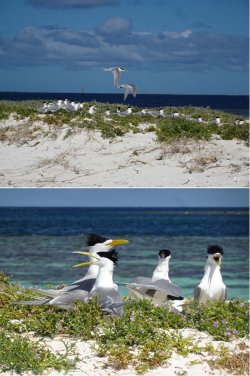
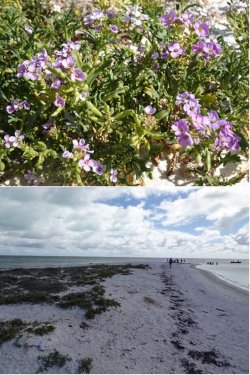
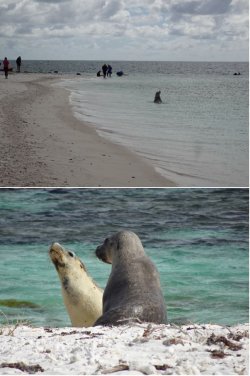
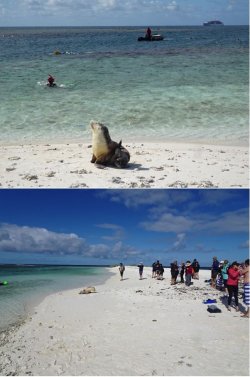
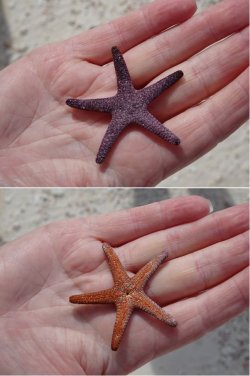
Little Sandy Island with Rat Island, and its many crayfishing facilities, in the background. Little Sandy Island featured for a sundowner on my previous trip (posts #35 & 36: Not shipwrecked or mutinying, waving - from the Abrolhos Islands).
Plant a coconut palm tree and you have the set for many a Gary Larson cartoon…








JohnM
Enthusiast
- Joined
- Jun 7, 2006
- Posts
- 11,804
- Qantas
- LT Gold
Next morning, still at anchor off Rat Island, a visit to Morley Island. The hope to visit the unique nesting habitat of the rare Australian sub species of the lesser noddy was thwarted when other birds were fledging young in the vicinity. Given the fresh wind, disturbance could threaten the fledglings being blown into the sea and not having the strength or flying skill to return, so we spent some time on the beach at the opposite end of the island.
See post #25 from my previous visit to adjacent Wooded island for why the lesser noddy nesting is biologically fascinating: Not shipwrecked or mutinying, waving - from the Abrolhos Islands.
Low tide necessitated transferring from the tender to Zodiacs to get ashore.
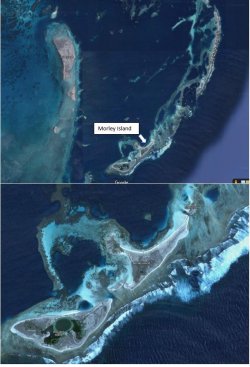
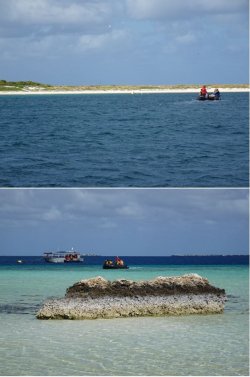
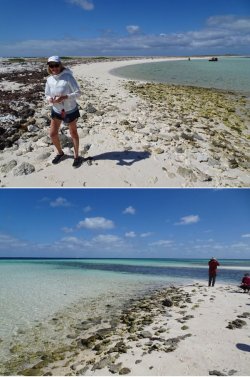
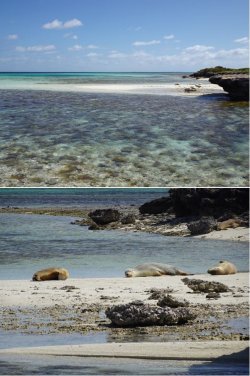
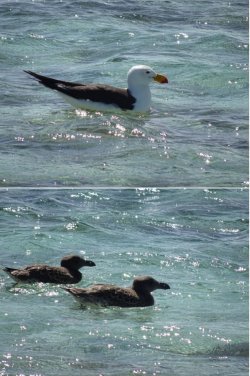
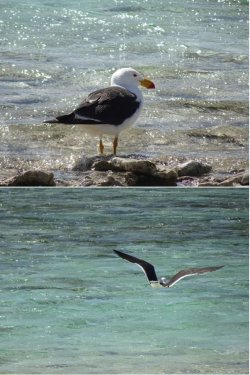
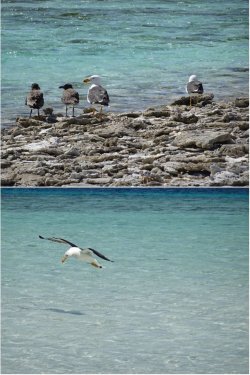
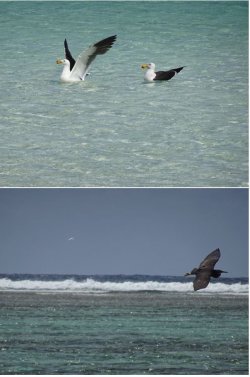
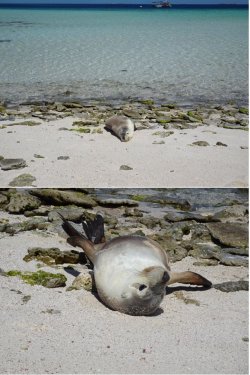
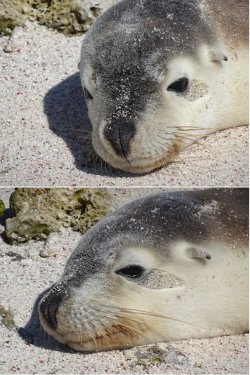
See post #25 from my previous visit to adjacent Wooded island for why the lesser noddy nesting is biologically fascinating: Not shipwrecked or mutinying, waving - from the Abrolhos Islands.
Low tide necessitated transferring from the tender to Zodiacs to get ashore.










JohnM
Enthusiast
- Joined
- Jun 7, 2006
- Posts
- 11,804
- Qantas
- LT Gold
Motoring past the crayfishing houses and facilities on Rat Island on the way back to the ship.
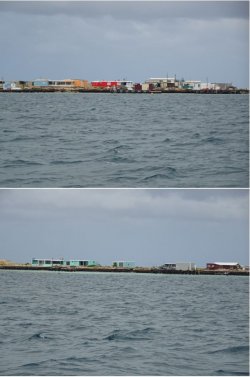
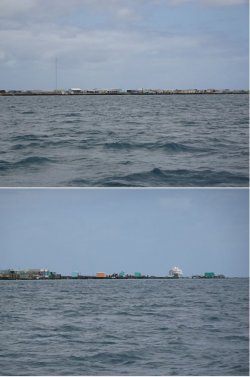
Back to the ship and moving further S to the Pelsaert Group in the Abrolhos.
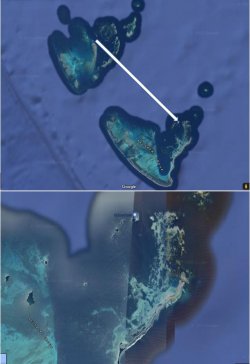
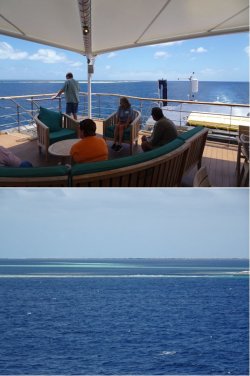
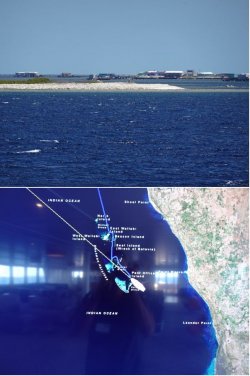
Going ashore on Post Office Island for some description of the crayfishing industry and a visit to the shop of a small pearl-farming operation specialising in black pearls.
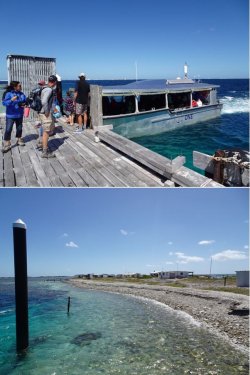
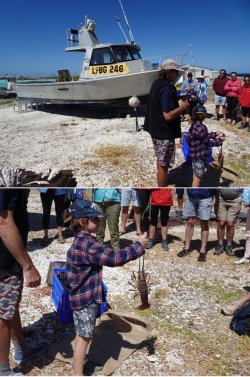
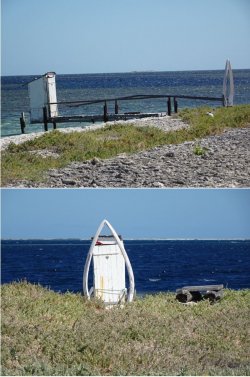


Back to the ship and moving further S to the Pelsaert Group in the Abrolhos.



Going ashore on Post Office Island for some description of the crayfishing industry and a visit to the shop of a small pearl-farming operation specialising in black pearls.



JohnM
Enthusiast
- Joined
- Jun 7, 2006
- Posts
- 11,804
- Qantas
- LT Gold
Family memorial.
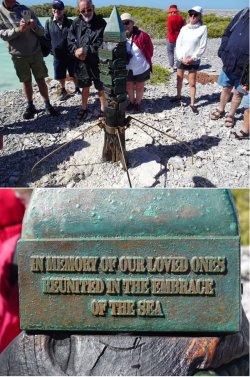
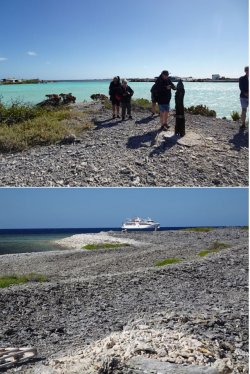
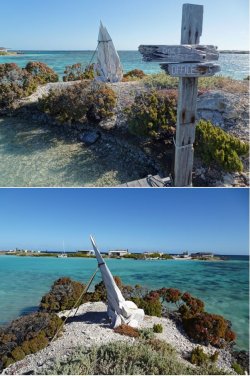
Back to the ship and the start of a 30-hour run straight through to Fremantle through some fairly rough seas. Earlier in the voyage when we headed into heavy seas we were pitching directly into a regular swell; this time the sea was messier and there was more corkscrewing, although it was still mild in the grand scheme of such things.
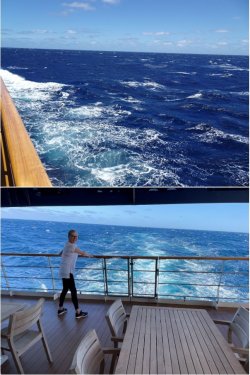
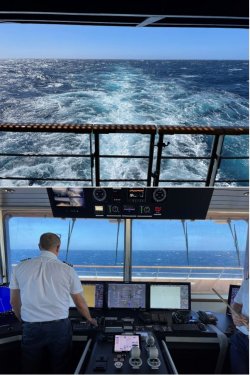
Next morning, entering Fremantle harbour and tying up.
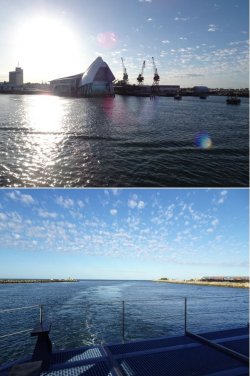
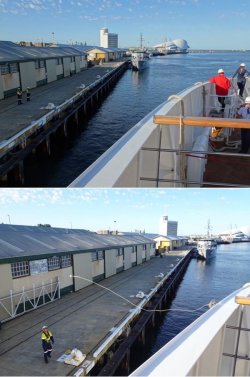
And that ended a great voyage.
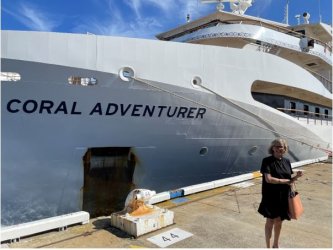



Back to the ship and the start of a 30-hour run straight through to Fremantle through some fairly rough seas. Earlier in the voyage when we headed into heavy seas we were pitching directly into a regular swell; this time the sea was messier and there was more corkscrewing, although it was still mild in the grand scheme of such things.


Next morning, entering Fremantle harbour and tying up.


And that ended a great voyage.

- Status
- Not open for further replies.
Become an AFF member!
Join Australian Frequent Flyer (AFF) for free and unlock insider tips, exclusive deals, and global meetups with 65,000+ frequent flyers.AFF members can also access our Frequent Flyer Training courses, and upgrade to Fast-track your way to expert traveller status and unlock even more exclusive discounts!

AFF forum abbreviations
Wondering about Y, J or any of the other abbreviations used on our forum?Check out our guide to common AFF acronyms & abbreviations.







